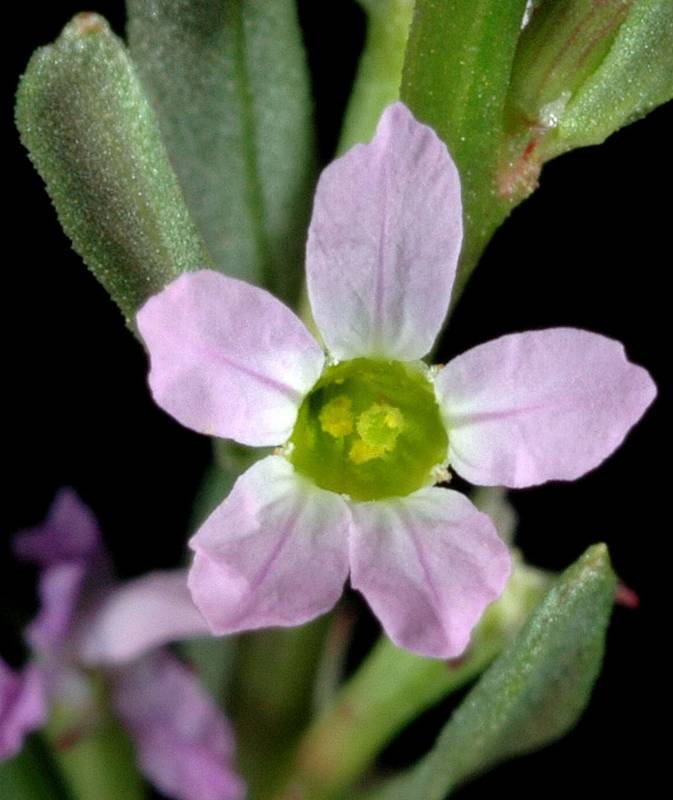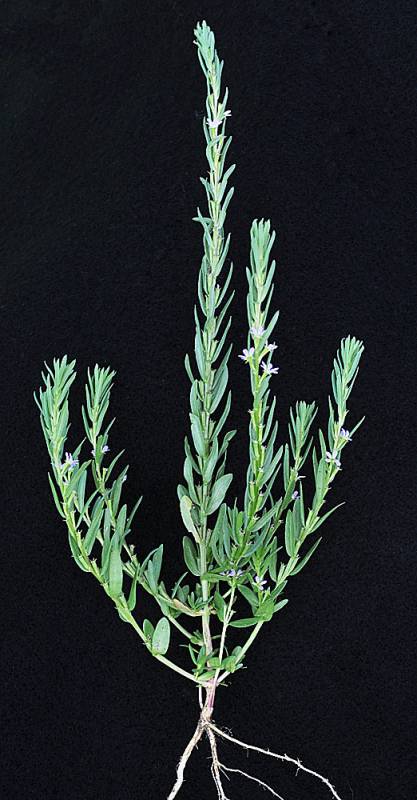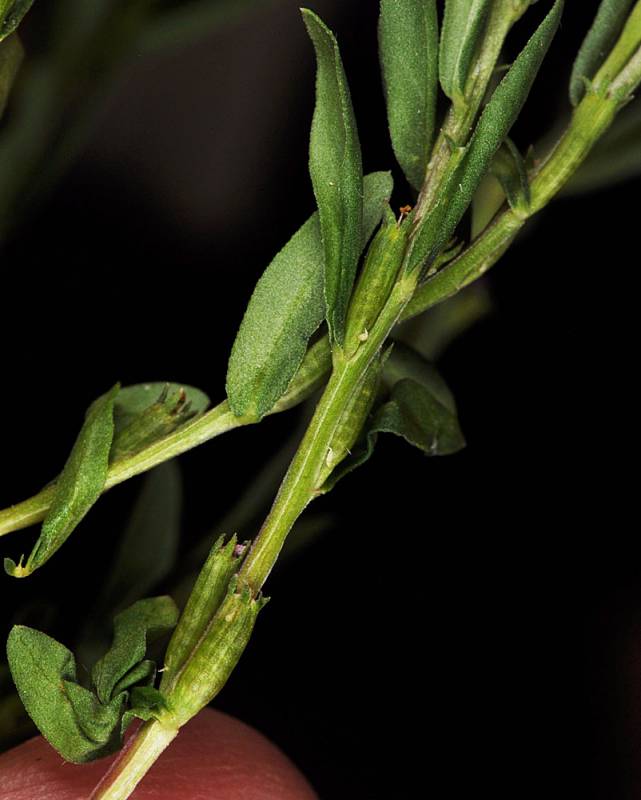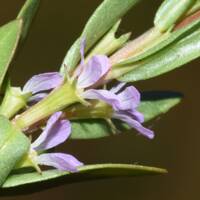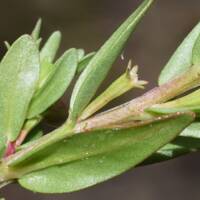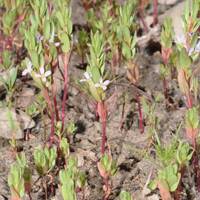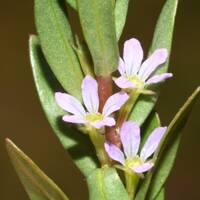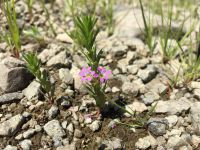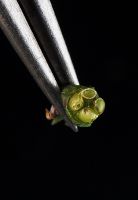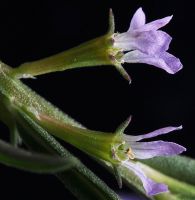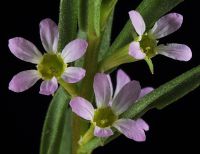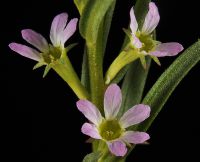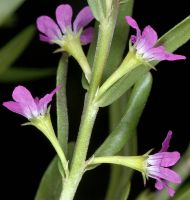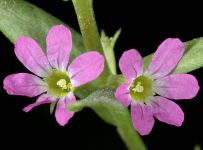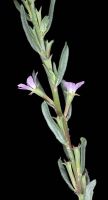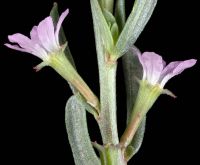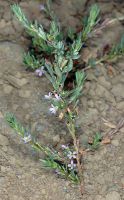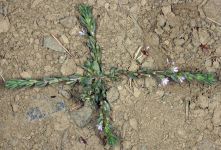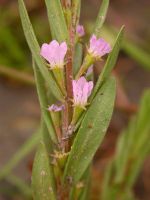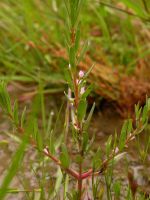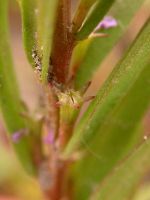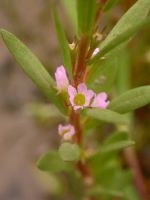Distribution: Occurring chiefly west of the Cascades crest in Washington; British Columbia to California; also in northeastern North America.
Habitat: Moist, disturbed areas.
Flowers: May-September
Origin: Introduced from Europe
Growth Duration: Annual
Conservation Status: Not of concern
Pollination: Bumblebees, bees, butterflies
Glabrous, pale glaucous-green annual, the stems simple or branched, 1-4 dm. tall, erect or nearly prostrate, somewhat angled.
Leaves alternate, or some of the lower ones opposite, linear to oblong, 1-2.5 cm. long and 1-8 mm. broad, entire.
Flowers perfect, solitary and sessile in the upper leaf axils; calyx tube 4-5 mm. long, with 5-7 lobes about 0.5 mm. long, and linear appendages about twice as long alternating with the lobes; petals 5-7, white to rose, 2-3.5 mm. long, attached to the top of the calyx tube; stamens inserted in the calyx tube.
Capsule elongate, 2-celled.
Publication: Sp. Pl. 1: 447. 1753.
PNW Herbaria: Specimen records of Lythrum hyssopifolia in the Consortium of Pacific Northwest Herbaria database
WA Flora Checklist: Lythrum hyssopifolia checklist entry
OregonFlora: Lythrum hyssopifolia information
E-Flora BC: Lythrum hyssopifolia atlas page
CalPhotos: Lythrum hyssopifolia photos

